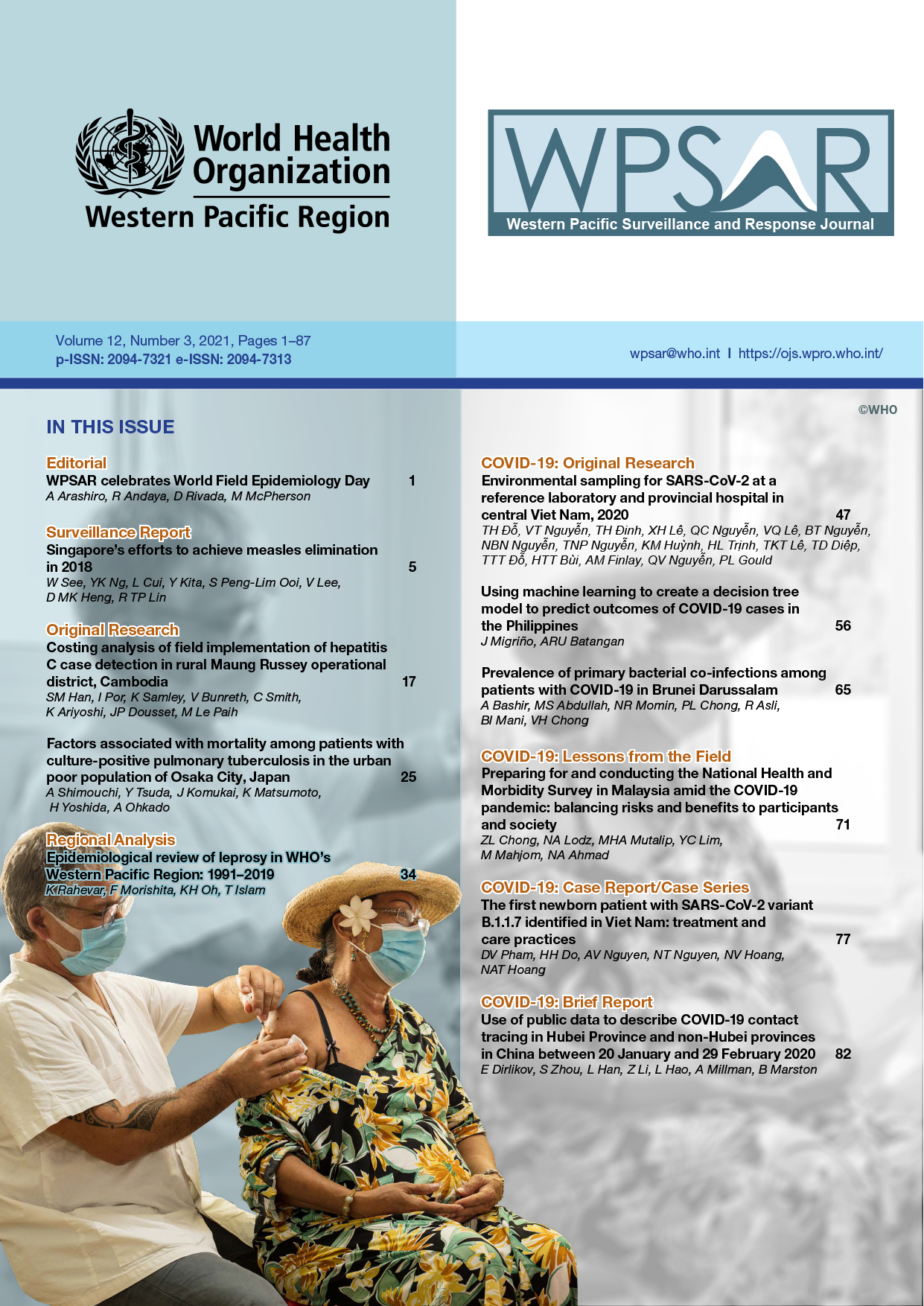Epidemiological review of leprosy in WHO’s Western Pacific Region: 1991–2019
DOI:
https://doi.org/10.5365/wpsar.2021.12.3.858Abstract
Background: Leprosy elimination was achieved in the Western Pacific Region of the World Health Organization (WHO) in the late 1980s. However, cases continue to be reported within the Region. This paper analyses leprosy cases in the Region reported to WHO during 1991–2019.
Methods: Descriptive analyses were conducted of data from leprosy surveillance reported in the Region. Key indicators included prevalence, the number and rate of new cases detected, proportions of cases with multibacillary leprosy or grade 2 disability, and the numbers and proportions of cases among children and cases by sex.
Results: From 1991 to 2019, the number of registered cases detected in the Region decreased by 94% (from 68 313 in 1991 to 4381 in 2019), and the number of new cases detected decreased by 72.1% (from 15 002 in 1991 to 4004 in 2019). The proportion of cases of multibacillary leprosy increased from 67.4% (8045/11 943) in 1995 to 85.6% (3428/4004) in 2019, and between 1997 and 2019 the number of leprosy cases occurring in children decreased from 1240 to 424. The proportion of new cases with grade 2 disability decreased from 15.4% in 1997 to 6.6% in 2019. With few exceptions, nearly two thirds of reported cases occurred in males.
Conclusion: Most countries and areas in the Region have successfully eliminated leprosy, although some pockets remain in countries with hard-to-reach areas. The introduction of multidrug therapy and WHO’s 1991 elimination goals may have prompted the initial decline in leprosy cases. Continued efforts are required in case-finding, care and prevention in areas with a high burden of disease.

